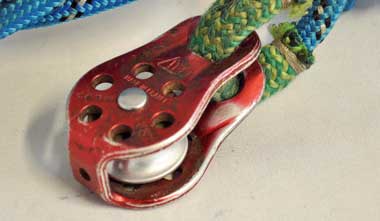The question has been asked regarding visible wear on anodized tree climbing hardware, particularly alloy rings and carabiners - how bad does the wear have to be before the decision is made not to climb.
As with most things tree climbing, 'experience' plays a huge part in determining how bad is bad when it comes to gear!
Treetools believe the gear scrutineers at the major tree climbing events use a rough rule-of-thumb of 10% visible wear - but even that measure comes with some provisos, again, largely dependent on the gear checkers experience.
For those climbers with limited experience this vague 'measure' can be more than a little daunting.
So, to help gain some understanding, download and read a copy of 'Wear and Strength Reduction of Old carabiners Anecdotal Test Results'.
This 10-year-old paper relates to ex Boy Scout Jamboree carabiners used in a 'wet, highly abrasive environment' but the data is still relevant to tree climbers.
Note the wear percentages relative to failure.
The small test batch of carabiners all failed at the gate, not the actual point of wear. The authors suggest the reason for this is: "the greater the wear on the carabiner, the quicker the carabiner deformed, placing load on the gate leading to failure".
Common sense would tell us "the greater the wear, the lower the breaking strength" and that proved to be correct in these tests although the authors are quick to point out the results and conclusions are for general interest and entertainment only, not to form recommendations on which your life might depend!
Another, non-tree climbing reference worth perusal is the Backcountry Beacon. They wrote a series of articles on 'When to Retire Climbing Gear'. Although the equipment is mountain and rock wall climbing specific it is still offers some pointers for tree climbers.
Anodizing wear is only one factor in determining the suitability of equipment for continued service - experience counts.

